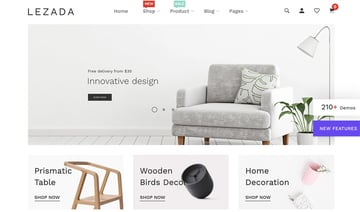
May 28, 2022 | Tahoe SEO

As a business owner in the Lake Tahoe area, you know that competition is fierce. You need to make sure that your website is ranking high in search engines so potential customers can find you easily. Luckily, our Tahoe SEO experts are here to help!
What is SEO?
SEO is short for “Search engine optimization.” It is a long-term marketing strategy employed in order to improve a websites visibility and organic search results in google and other global search engines.
What are the benefits of SEO?
There are many benefits of SEO, but some of the most notable ones include increased traffic, higher search engine rankings, and more brand awareness. SEO can also help to improve the usability of your website and make it more user-friendly. Ultimately, SEO can help you to achieve your business goals by driving more traffic and leads to your website.
What services does Tahoe SEO offer?
Tahoe SEO offers a variety of services that can help improve your website’s ranking in search engines. These services include keyword research, on-page optimization, and link building. Tahoe SEO can also help create and optimize PPC campaigns for your business.
What makes Tahoe SEO different from other companies?
When it comes to search engine optimization (SEO), Tahoe SEO is something special. Unlike most companies that rely on cookie-based tracking and artificial manipulation of search engine results, Tahoe SEO uses natural techniques that work with your website to help improve your visibility and traffic. Plus, our team is passionate about helping small businesses succeed online, so you can be sure that we’ll take the time to understand your business and customize a plan specifically for you.
Conclusion
When it comes to your business and online presence, you need someone who can help you optimize your website for search engines. If you’re looking for a SEO expert to help with your Tahoe SEO needs, look no further than our team at Local SEO Pros. We have years of experience in the industry and know exactly how to help your business rank higher in Google and other major search engines. Contact us today to get started!
Needing help with your web design? Is your websites design hurting your SEO?

May 28, 2022 | SEO Not Working
Why are my SEO rankings dropping?
Have you ever wondered why your SEO rankings suddenly drop without any explanation? If so, then you’re not alone. Many website owners and bloggers have experienced the same thing. While there could be a number of reasons for this, in this article, we’ll explore some of the most common ones.
Reasons for SEO rankings dropping
There are many potential reasons for why your SEO rankings might be dropping. It could be due to a change in algorithm from the search engine, increased competition from other websites, or simply because you have not been keeping up with the latest trends and best practices. Whatever the reason, it is important to take a close look at your website and see what might be causing the drop in ranking. Once you have identified the problem, you can then work on fixing it so that your website can start climbing back up the search engine results pages.
How to troubleshoot the issue
If you’re noticing a drop in your SEO rankings, there could be a number of reasons why. In this blog post, we’ll run through some troubleshooting tips to help you identify the cause of the problem.
First, check to see if there have been any recent changes to your website. If you’ve made any changes to your site’s content or structure, that could be the reason for the drop in rankings. If that’s the case, simply revert back to the previous version of your site and see if that restores your rankings.
Another possible reason for a drop in SEO rankings is a change in Google’s algorithm. Google frequently updates its algorithm, and sometimes these changes can result in a drop in rankings for some websites. If you think this might be the case, try doing a Google search for your keywords and see if your website is still appearing in the results. If not, there’s not much you can do except wait for Google to fix the issue.
Finally, it’s also possible that your competitors are simply out-ranking you. If they’ve made improvements to their own websites or are doing better with their SEO efforts than you are, that could explain why your rankings have dropped. In this
What to do if you can’t find the issue
If you’re noticing that your SEO rankings are dropping, there are a few potential causes. First, check to see if there have been any recent changes to your website. If you’ve made any changes to your site’s content or design, it could be impacting your SEO. You may also want to check for any negative reviews of your site online. If there are any, addressing them could improve your rankings.
If you can’t find the issue with your website, it’s possible that the drop in rankings is due to a change in Google’s algorithm. Google frequently updates its algorithm, and these changes can sometimes impact rankings. However, it’s also possible that the drop is simply due to a change in the way people are searching. If you’re not sure what’s causing the drop in rankings, reach out to an SEO expert for help.
How to prevent ranking drops
SEO is an ever-changing landscape, and what worked yesterday may not work today. That’s why it’s important to stay on top of the latest SEO trends and best practices. Here are some tips on how to prevent your SEO rankings from dropping:
1. Monitor your backlink profile. Make sure that your backlinks are from high-quality websites. If you have a lot of low-quality or spammy backlinks, this could be one reason why your rankings are dropping.
2. Keep your content fresh. Google loves fresh, relevant content. If your website hasn’t been updated in a while, this could be another reason why your rankings have dropped.
3. Monitor your keyword rankings. Track your keywords and see if there has been any change in their ranking positions. If there has been a significant drop in ranking for one or more of your keywords, this could be the reason why your overall SEO rankings have dropped.
4. Stay up to date with the latest SEO trends and best practices. As the landscape of SEO changes, make sure you are keeping up with the latest trends so that you can implement them on your website. This will help ensure that your website is as optimised
Conclusion
There are many possible reasons why your SEO rankings could be dropping. It could be due to a change in Google’s algorithm, or it could be because you’re not producing as much high-quality content as you used to. It’s important to investigate the reason for the drop in rankings so that you can take steps to remedy the situation. If you’re not sure where to start, consider reaching out to an SEO expert who can help you diagnose and solve the problem.

May 27, 2022 | Shopify Reno
Shopify is one of the most popular ecommerce platforms and it’s easy to see why. It’s simple to use, has a wide range of features, and is very scalable. In this article, we’re going to show you how to build a Shopify store from scratch.
Decide on the products you want to sell
If you’re starting a Shopify store from scratch, you need to decide on the products you want to sell. This can be a difficult decision, especially if you’re not sure what kind of products will be popular with your target audience. Do some research and create a list of potential products to sell. Once you have a list of potential products, narrow it down to the ones that you think will be the most popular and profitable.
Once you’ve decided on the products you want to sell, it’s time to start setting up your store. Shopify makes it easy to create a professional-looking online store with all the features and functionality you need to start selling your products. Follow the steps below to get started.
Choose your Shopify plan and domain name
Shopify has four different plans, and each one comes with its own set of features. To help you decide which plan is right for you, we’ve created a comparison chart.
Once you’ve selected your plan, you’ll need to choose a domain name for your store. Your domain name is the address people will use to find your store online (for example, www.mystore.com). If you don’t have a domain name yet, don’t worry – Shopify can help you choose and buy one.
Set up payment methods
Now that you have your Shopify store set up, it’s time to start adding products! But before you can do that, you need to set up some payment methods so that your customers can actually buy those products. In this blog post, we’ll show you how to set up some of the most popular payment methods for Shopify stores.
First, you’ll need to log in to your Shopify account and go to the ‘Payments’ section of your admin panel. From there, you can choose which payment methods you want to enable for your store. Shopify supports a wide range of payment providers, so you should be able to find one that fits your needs.
Once you’ve chosen a payment provider, you’ll need to enter some basic information about your business and account. This includes things like your business name, address, and contact information. You’ll also need to provide some financial information so that Shopify can process payments on your behalf.
Once you’ve entered all the required information, click ‘Save’ and you’re ready to start accepting payments!
Add products to your store
Adding products to your Shopify store is easy! You can add products manually, or you can use a product CSV file to bulk add products. To add products manually:
1. From your Shopify admin, go to Products > Add product.
2. Enter a product title and description.
3. Choose a product type, then enter the price and compare at price (if applicable).
4. Optionally, add tags to help organize your products (e.g. “spring collection”).
5. If you have a physical product, enter its weight and dimensions. This information is used to calculate shipping rates.
6. Add one or more variants for the product, then click Save product.
Now that you know how to add products to your Shopify store, you can start building your inventory!

Customize the look of your store
Building a Shopify store is easy, but making it look great can be a bit more challenging. Fortunately, Shopify makes it easy to customize the look of your store with their built-in themes and customization options. In this article, we’ll show you how to build a beautiful Shopify store that reflects your brand and style.
First, start by choosing a theme that fits the overall look and feel you want for your store. Shopify has dozens of free and paid themes to choose from, so you’re sure to find one that’s perfect for your business. Once you’ve selected a theme, take some time to explore the customization options. With most themes, you can change things like the color scheme, font style, and layout without needing any coding knowledge.
If you want to really make your store stand out, consider hiring a Shopify expert to help with the customization process. They can help you create a unique design that perfectly reflects your brand identity. No matter what route you decide to go, building a beautiful Shopify store is easy with a little time and effort.

Drive traffic to your store
The blog section is a great place to share your store’s story, build up your brand, and attract new customers. But how do you make sure that your blog posts are reaching the right people?
Here are some tips for driving traffic to your Shopify store with your blog:
1. Use social media to share your posts
Make sure to share each of your blog posts on social media. This will help to increase the reach of your posts and get more people interested in what you have to say.
2. Use relevant keywords
When you’re writing your posts, be sure to use relevant keywords so that people can easily find them when they’re searching online. This will help you to attract readers who are already interested in what you have to say.
3. Promote your posts through email marketing
If you have an email list, be sure to promote each new blog post through it. This will help to ensure that your loyal readers don’t miss out on any of your latest content.
By following these tips, you can drive more traffic to your Shopify store and attract new customers with your blog.
Conclusion
Building a Shopify store is a great way to get started in ecommerce. It’s easy to use and has everything you need to get started. Plus, there are plenty of resources available if you need help along the way. In this article, we’ve walked you through the process of setting up your Shopify store from start to finish. We hope you found it helpful!

May 26, 2022 | Reno Website Design
Web Design Tips
You don’t have to be a tech whiz to create a beautiful website. With these easy tips, anyone can put together a site that’s both visually appealing and user-friendly.
Navigation
Designing a website can be overwhelming, especially when it comes to the navigation. Where do you start? How do you make sure people can find their way around your site?
Here are a few tips to help you design an effective navigation system for your website:
1. Keep it simple. Don’t try to cram too much into your navigation menu. Stick to the essentials and keep the rest of the information on your site easy to find.
2. Use clear and descriptive labels. Your navigation should be intuitive, so make sure the labels are self-explanatory.
3. Use drop-down menus sparingly. Drop-down menus can be helpful if used sparingly, but they can also be confusing and overwhelming if overused.
4. Don’t forget about mobile users. With more and more people accessing the internet from their phones and tablets, it’s important to make sure your site is responsive and easy to use on all devices.
5. Test, test, test! Once you’ve got your navigation set up, put it to the test by having people use it (friends, family, co-workers, etc.). See if they can find their way around
Headlines
Your headline is one of the first things people will see when they visit your blog, so it’s important to make sure it’s attention-grabbing and relevant to your content. A good headline will entice readers to click through and read your post, so it’s worth taking the time to craft a strong one. Here are some tips for writing headlines that will grab attention and encourage people to read your blog posts:
1. Keep it short and sweet. A headline should be easy to read and understand, so avoid long, convoluted phrases.
2. Use keyword-rich phrases. Including relevant keywords in your headline will help your post show up in search engine results, making it more likely that people will find and read it.
3. Make it interesting. A boring headline won’t entice anyone to click through, so try to make yours interesting and engaging. Use strong adjectives and active verbs to create a sense of excitement.
4. Use numbers or lists. Headlines with numbers or lists are more likely to be clicked on than those without, so if it makes sense for your content, consider using this type of headline.
5. Ask
Images
Images are an important part of any website. They can help to make a site more visually appealing, and can also help to convey a message or provide information. When choosing images for your website, it is important to consider the following:
• File size: Large files can take longer to load, so try to use smaller files whenever possible.
• Resolution: Higher resolution images will look better on retina displays and other high-resolution devices.
• Alt text: This is text that appears in place of an image if the image cannot be loaded. It is important to include relevant alt text so that users know what the image is supposed to represent.
• Image format: JPEGs are generally best for photos, while PNGs or GIFs are better for images with fewer colors (like logos).
Colour Scheme
When it comes to choosing a colour scheme for your website, there are a few things you need to take into consideration. First, you need to think about what kind of mood you want to set with your website. Do you want it to be calm and relaxing? Or do you want it to be bright and energetic? Once you’ve decided on the overall mood, you can start picking out specific colours that will help create that feeling.
You also need to consider the different elements on your website and how they will work together. For example, you don’t want your text to be too close to the same colour as your background, otherwise it will be difficult to read. You also want to make sure that your links stand out so that people can easily click on them.
Finally, you need to think about your brand and what colours represent it. If you have a logo, you’ll want to use colours that are in it so that people can easily recognise your site. If you don’t have a logo, then you’ll need to choose colours that reflect the type of business or organisation you are.
With all of these factors in mind, you should be able to narrow down your choices and come
5.Layout
Layout is one of the most important aspects of web design. It can make or break a website. A good layout is essential for a website that is easy to use and looks great.
There are a few things to keep in mind when designing the layout of a website. First, the layout should be easy to understand. The user should be able to find what they are looking for quickly and easily. Second, the layout should be visually appealing. The website should be pleasing to look at and easy on the eyes. Third, the layout should be responsive. The website should look good on all devices, from desktop computers to mobile phones.
Creating a good layout is not always easy, but it is worth the effort. A well-designed website will be more successful and will attract more visitors than a poorly designed website.
Fonts
One of the most important aspects of web design is choosing the right fonts. The right font can make your website more readable, stylish, and engaging. However, the wrong font can make your website look unprofessional, cluttered, and even difficult to read.
There are a few things to consider when choosing fonts for your website. First, you need to make sure that the font is easy to read. This is especially important for body text. If your visitors can’t read your content, they’re not going to stick around for long.
Second, you need to consider the overall style of your website. If you’re going for a more traditional look, you’ll want to choose a serif font. Serif fonts have small embellishments on the ends of the letters, which give them a classic look. If you’re going for a more modern look, you’ll want to choose a sans-serif font. Sans-serif fonts are clean and simple, without any embellishments.
Finally, you need to consider how many different fonts you’re going to use on your website. Using too many fonts can make your website look cluttered and busy. Stick to one or two fonts for the
Conclusion
Creating a website can be daunting, but using these tips as a guide will help simplify the process. Whether you’re starting from scratch or revamping an existing site, these tips will help you create a beautiful and functional website that meets your needs. And remember, the best websites are always evolving, so don’t be afraid to experiment and try new things. With a little patience and effort, you’ll have a website that you can be proud of.

May 17, 2022 | Website Design Services
Website Design Services for eCommerce Websites
If you want your website to be mobile-friendly, you can go for eCommerce website design services. Aside from the basic design package, eCommerce websites often require payment processor integration, product setup, and other features. Moreover, they need to be mobile-friendly across various platforms and screen sizes, so that customers do not leave your business to your competitors. There are a variety of packages available to meet your needs, and our team of talented designers will make sure to create a website that works on all of them.
Internet web design
Responsive web design services are an essential part of your digital venture. In fact, 72% of internet users prefer mobile-friendly websites, and 60% of internet browsing is done on mobile devices. However, poor mobile UX is often a major reason that visitors leave a website and go to one of their competitors. Google, for example, gives preference to mobile-friendly sites when ranking websites. Responsive website design incorporates flexible grids, images, and strategically created CSS media queries.
A website built using responsive web design techniques can offer a completely different experience on different devices. Dropbox, for example, features a full menu on desktops and a more condensed version on handheld devices. A signup form is visible on desktops, but hidden behind a call-to-action button on handheld devices. Dribbble, for example, uses a grid that collapses to two columns when viewed on tablets or mobile phones.
By making your website accessible on any device, you can increase your overall website experience. No longer will visitors be frustrated with slow-loading pages, and they’ll be more likely to recommend your site to others. And, of course, responsive design will increase your search engine rankings – Google and other search engines recommend it! If you’d like to get started on a responsive web design project, Wix and WordPress both provide free responsive website design solutions.
Another important advantage of responsive web design services is their ability to adapt their designs to different screen sizes without compromising usability. A responsive website will automatically resize elements such as text, images, and videos according to the viewport size. It will also adhere to the DRY development philosophy. If you’re looking for a responsive web design service, get in touch with a team of experts and begin creating your next masterpiece. You’ll be glad you did!
Moreover, responsive websites offer a more consistent user experience. They display a full version on desktop computers and a simplified version on mobile devices. Responsive websites also load faster on any device. Moreover, they support a variety of operating systems and browsers. Ultimately, responsive web design improves the overall user experience and helps boost conversions. And, because these sites are scalable and cross-platform, they’re a great investment for your business.
In the world of modern technology, users expect quality when surfing the web. Responsive web design services offer this, eliminating the need for separate versions of your site. They ensure your website’s content is easily readable and navigable on all devices. And, as a result, you’ll receive more visitors. The more users you have, the more money your business will earn. And, it’s never been so easy to make your online presence look as professional as it is today.
Web Design Site – Responsive web design for desktop computers
Desktop browsers are not the only devices that use responsive web design. In fact, more people are turning to this form of design than ever before. Desktop computers aren’t the only devices that use responsive web design, as there are a number of mobile devices. For example, smartphones are easier to use than desktops, and have easier-to-use cameras. However, not every user uses their desktop browser to its full potential. That’s where responsive web design comes in.
A responsive website design is one that automatically adjusts its layout based on the screen size of the viewer. For example, multiple columns of content on a desktop screen will not be readable on a mobile device. By designing a website using responsive design, the content and design can fit onto different screens without losing their quality. Whether you want to target a mobile user or a desktop computer user, you’ll find the right solution for your website.
If you’re designing a website for desktop users, you should be aware of how mobile users use their computers. More than half of all web users now use their phones. This makes it essential to make your website suitable for every type of device, including desktop computers. A desktop computer with a small screen will have a smaller version of the same content. A desktop computer that is optimized for a desktop browser is not responsive.
The same thing applies to mobile devices. Mobile web traffic is growing at a fast pace. This means users expect a personalized experience when they access the internet. Responsive web design makes your website adaptable to all these devices. And this is why desktop users will continue to use your site! And you’ll see an increase in sales and satisfaction. And because of this, more businesses are turning to responsive web design.
Responsive web design for tablets
Responsive web design for tablets addresses several important issues, including minimizing load time and preventing large image breakage. Responsive design automatically adjusts size of media files and content to accommodate the device’s screen size. Responsive web design for tablets can be implemented using CSS or other media-specific techniques. If you are planning to use responsive web design for tablets in your site, read on to learn more about some of the benefits of this approach.
One of the most important aspects of responsive design is content prioritization. Large desktop monitors display more content than small smartphone screens. This means that users can easily glance around desktop monitors, but on smartphones they may have to scroll endlessly to find the right content. Smart content prioritization will help users find what they are looking for quickly and efficiently. For example, mobile users are less likely to read long text, so it is important to prioritize certain content.
Another problem with responsive Web design was that images were not scaled properly for small screens. This led to a problem when resizing images, which also scaled text and other elements. You can avoid this problem by overriding the default by setting initial-scale to 1, which overrides the default and resizes images proportionally. For more information about viewport meta tags, visit Apple’s documentation.
When it comes to testing, one of the most important aspects of responsive web design is the way in which it works on the devices in use. While it may seem like an unnecessary hassle, responsive web design allows your visitors to experience your site as it was meant to be viewed on all devices. Besides, the user experience is always the most important factor, which makes responsive web design a vital part of any site. With the use of tablets and smartphones, 56 percent of US web traffic is now coming from mobile devices.
To make responsive web design for tablets easy, you can choose one of the many templates available online. Some templates make everything fully resizable, which is great for tablet users, but not for desktop users. While it’s important to keep in mind that some mobile devices have limited data plans, you must ensure that your content is usable on any device. So, take a look at the best examples of responsive web design for tablets and decide for yourself which one works best for your business.
If you’re looking to increase the number of visitors to your site, responsive web design is essential. Users looking for products or services are likely to look for contact information on a mobile device. It makes it easier for mobile visitors to contact you, and makes it easier to convert them to customers. Responsive web design for tablets is vital for your business’s overall success. If you’re a small business that hasn’t yet made the switch to responsive web design, now’s the time to get started.
Reno SEO, Marketing & Web Design
450 Sinclair St, Reno, NV 89501
(775) 870-0488
www.RenoWebDesigner.com
https://www.linkedin.com/pulse/seo-expert-reno-sandy-rowley/
Keywords used in this article:
website design services
internet design
web design site
designing websites
website development
web designer companies
companies web design
website designer near me
web site services
web agencies
web designing and developing
design service online
professional website design
website of company
company that builds websites
web design small businesses












